Looking at the “The Triumph of Death” by Pieter Bruegel the Elder, I wonder what exactly is this picture about. The triumph of death as a subject functioned in art from the fourteenth century and was most often presented in the form of a triumphal procession, in which death proved its invincible power. In its meaning, the theme was close to the more popular in the Middle Ages theme of the dance of Death. Everyone was drew to this dance, regardless of the state, age and gender. These images offered the way to reflect upon the transition of life and the uncertainty of fate. They also reminded people of the need of acting in accordance with Christian principles in order to be saved.
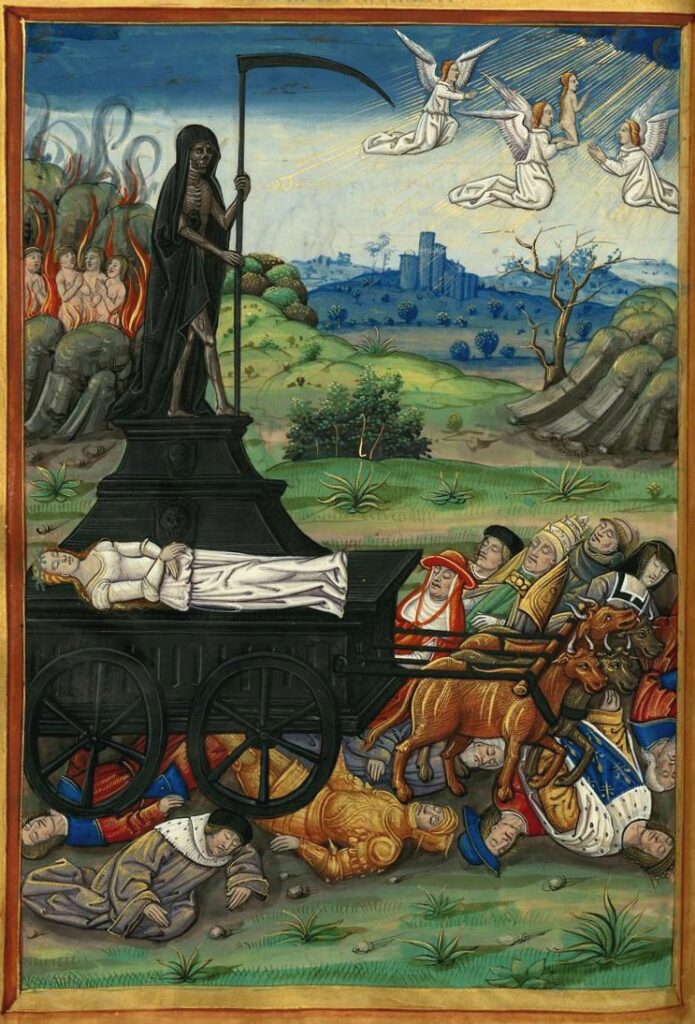
However, there is nothing of dignity in death in the Bruegel’s painting. It is full of fury acts of cruelty placed in a vast land demolished with conflagration. The figures are swirling everywhere, the fierce battle between people and the legions of skeletons takes place. The death they inflict is violent, brutal and merciless. Everyone is killed, regardless of age, condition or property. At the increasing sounds of the drum, which is furiously struck by the skeleton, the living are sent to the wagon (disturbingly similar to the stock-car), and all the escape routes are cut off.
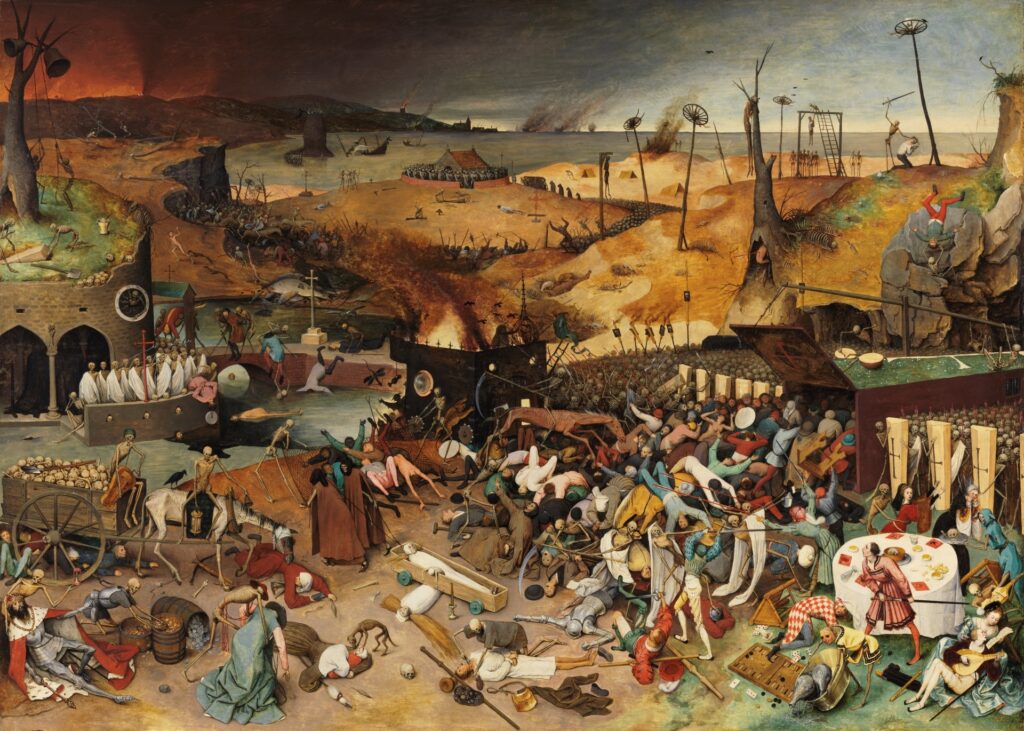
This scene in many respects resembles the apocalyptic vision of the end of the world described by Saint John. According to it, in the last days the land is to be mastered by four destroying horsemen that are: Conquest, War, Hunger and Death. In the woodcut made by Albrecht Dürer, the riders were shown in a gallop, trampling all those who stood in their way. However, they are led by an angel, which means that the destruction they carry is in accordance with the divine plan and promises salvation that can take place during the Last Judgment. Then the dead are to be re-called to life, and their deeds will be judged justly by Christ as the supreme judge. In the paintings with this topic, death is only a moment of transition into the waiting for salvation or condemnation. The dead will either follow the demons to hell or are brought into the Kingdom of Heaven, where eternal life awaits them.
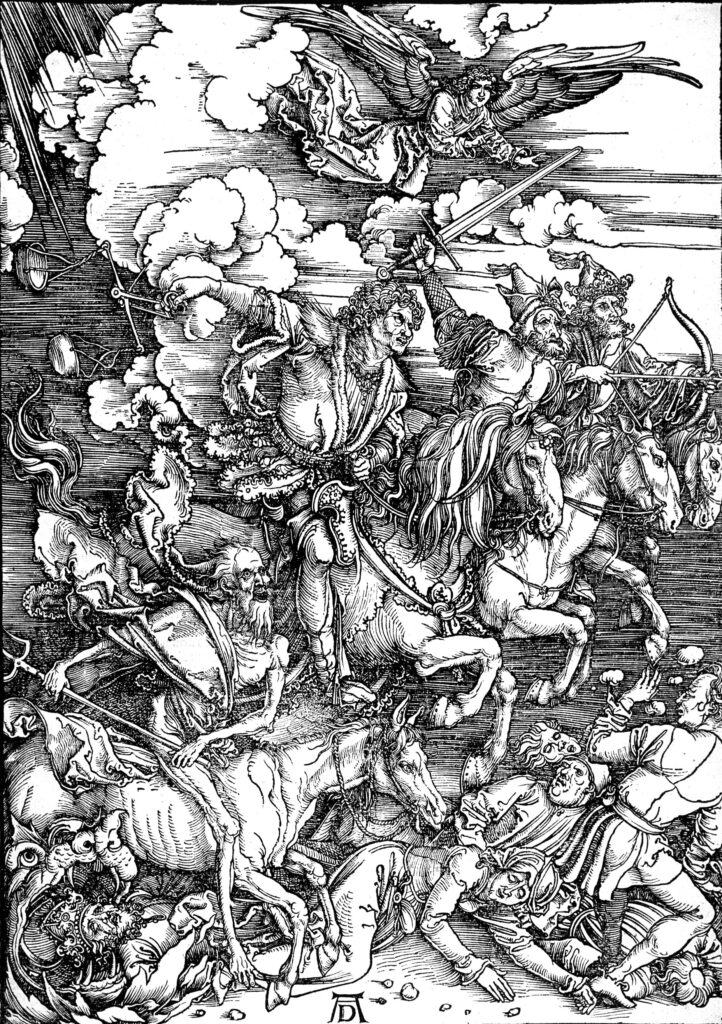
However, in Bruegel’s “Triumph of death” there is no promise of divine intercession. The world is in flames, there are fights everywhere – bloody, inexorable, sowing destruction. In the same time it is difficult to clearly determine who the attacker is. Skeletons that flood the world are not much different from those they send into the arms of death. Just as living people are organized into various groups: battle troops or religious groups, they work in pairs or alone. Not all of them are equally brutal, some are burying the dead (a couple on the hill), or even meditate upon the passing of life (a figure contemplating a dead bird, at the left edge of the picture). They are not free of flaws, such as greed ( the one dressed in an armor, eagerly reaching for a pile of gold coins).
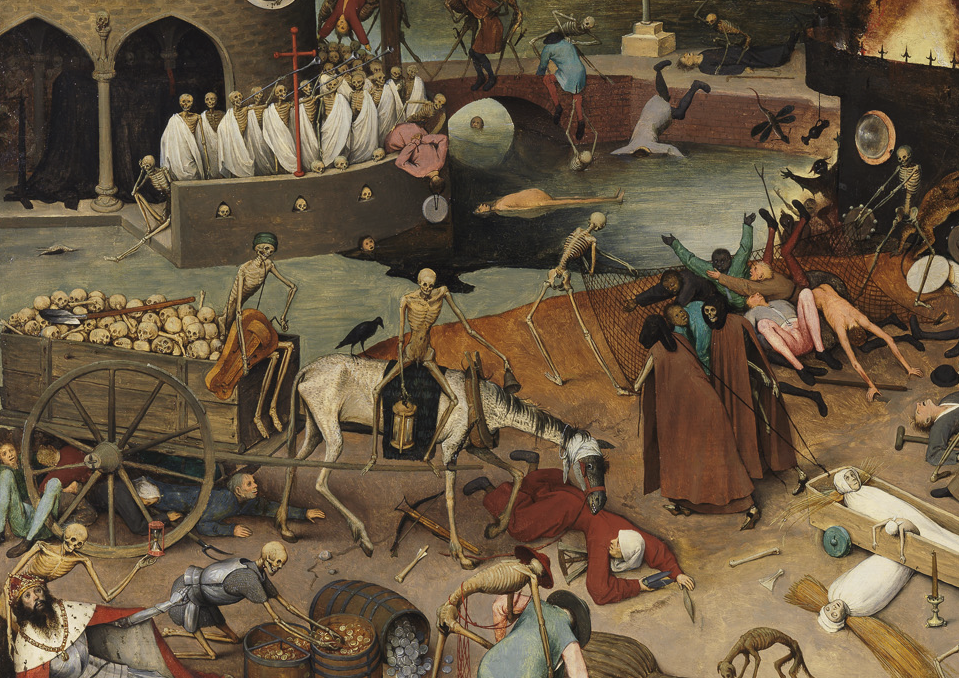
The medieval legend about the meeting of three living and three dead can be regarded as one of the inspirations. The dead bodies from the tale were to welcome the newcomers with the words: ” What you are, we once were, and what we are, you too will be!”.

Bruegel’s painting contains no encouraging message. The triumphant death gathers its harvest there, without promising anything in return. No reward or justice for good deeds. Its envoys, bony figures, do not spare anyone. Their nets catch every nation, defense against them brings no win. The artist decided to give a moment of forgetfulness, a blessing of not noticing the raging around cruelty, only to a pair of lovers. They are placed in the lower right corner, they look deeply in each other’s eyes while making music. And for this one long moment they do not see that they are also accompanied by death.
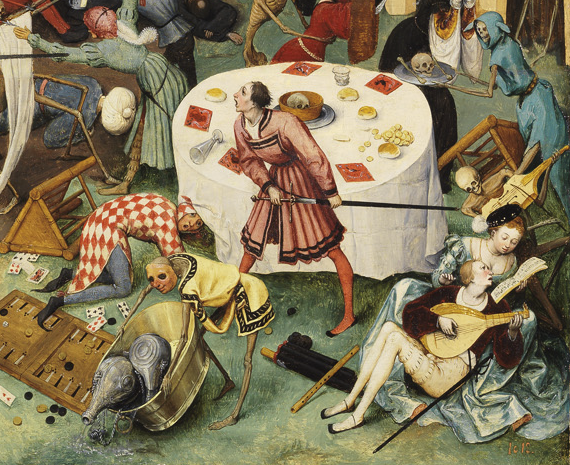
Visits: 1